Two Days of Masti
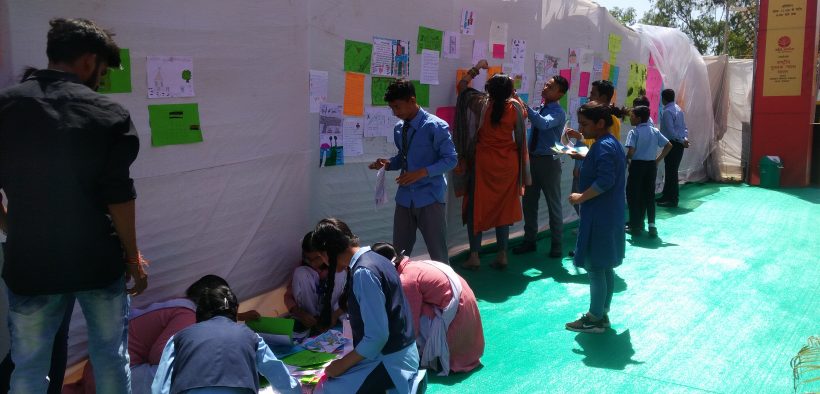
by Rajesh Khar
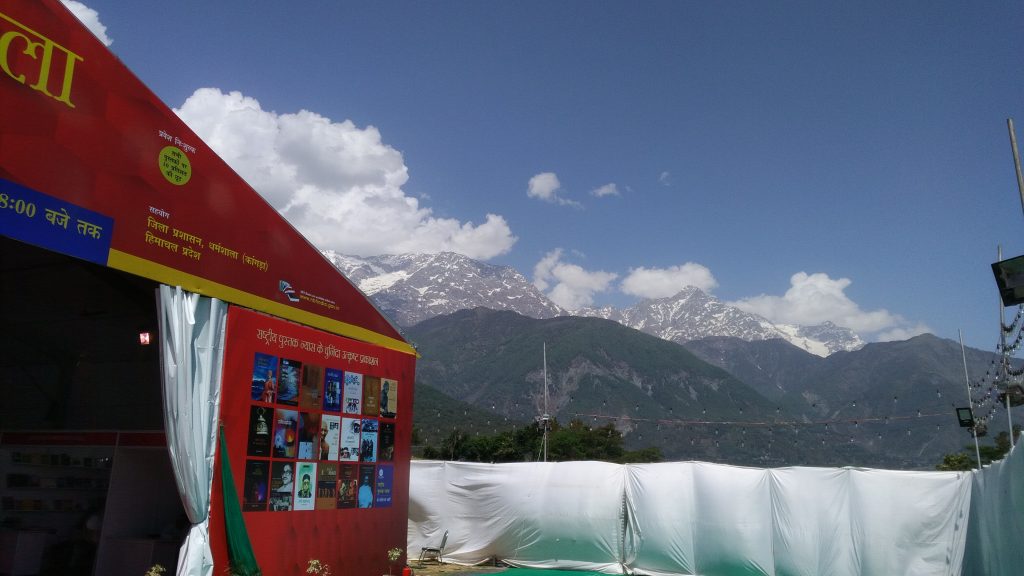
A big temporary maroon hanger sitting in the Police Ground against the backdrop of snow peaked Dhauladhar mountains looked very pretty. It was about to be ten in the morning when I reached there. With a cool breeze blowing and a partly cloudy sky outside, I entered the maroon hanger. This was the Dharamsala Book Fair organised by the National Book Trust. Crossing the two columns of book shops on either side, I reached a pretty big space at the back, I was soon to realise that about 250-300 people can gather in this makeshift hall easily.
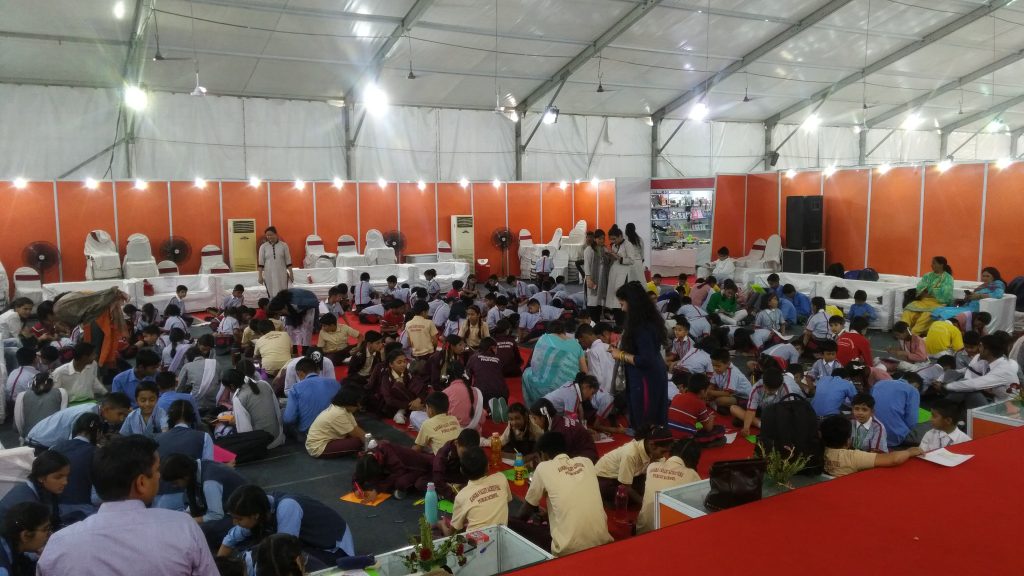
Wearing a wide smile, Pankaj Chaturvedi, an editor with NBT walked in along with few others. We had barely exchanged hellos and rows of children started pouring in. They were in all sizes and in their uniforms. Now the hall was a buzz with children talking and laughing. Before I could observe them some more, Pankaj ji began addressing them. So the workshop had begun.
Close observation of the surrounding was the central theme. What is observation? How do we observe? What do we mean by surroundings? Children were full of questions. I began by asking simple questions like what do you see when you get up in the morning? What did you see today while coming to the book fair? What did you like about what you see outside? And what do you didn’t like? Children had answers that seem to gush forth like a mountain spring. They wouldn’t stop, but I had to play the bad cop. Did you see the snow on the mountain peaks? Did you see the rain clouds in the sky? Did you notice the colour of the book fair hanger? What colour is your school building? What colour is your water bottle? Did you see any flowers in the grass outside today? Does the carpet in the hall look more like a ripened jamun or an apple? You can imagine the amount of noise that the answers to these questions would have made! Everybody wanted to answer. Thank NBT for the cordless microphone, otherwise I could have shouted to glory without even getting a single ear’s attention.
Perspective is a big thing in observation. So, an abridged version of Arvind Gupta’s The Big, Big Matchbox followed. Children liked it so much that they wanted empty matchboxes to fill. I couldn’t help them here but my task was done. Their brains were searching for things they like, all big and all small, all colourful ones, inside and outside their houses and schools and on the streets, everywhere.
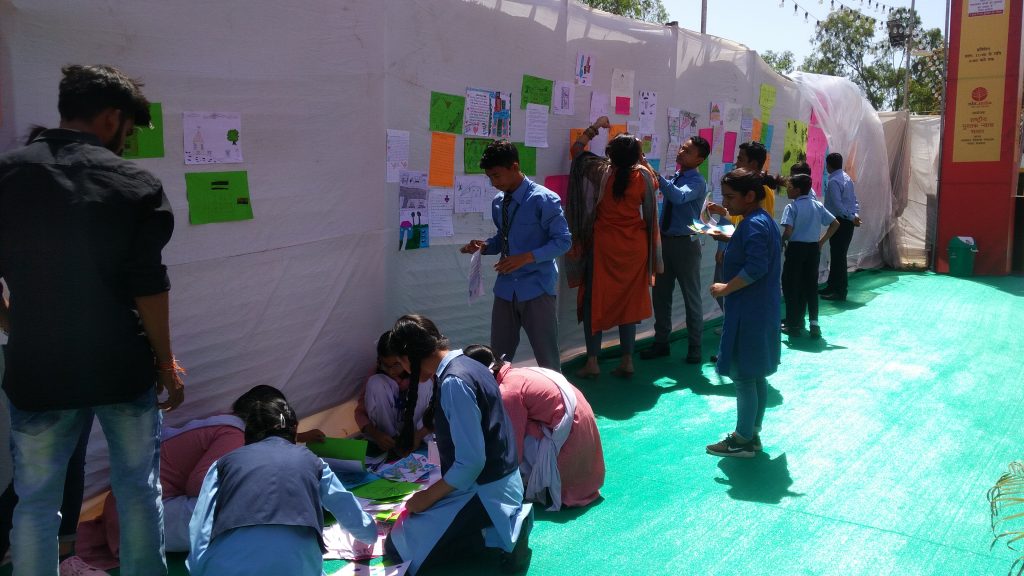
So I divided them into pairs with one child volunteering to write and the other one to draw. Entire gang of 196 children sat in twos and wrote and illustrated what they liked or disliked about their immediate surrounding, broadly Dharamsala. One condition however, was laid down for this task – that the pair had to work like one; the illustrator would draw only what the writer has written. So, they discussed among themselves and sat down with pen, pencil and colours. Time passed and there emerged creative pieces giving shape to things that were sometimes imaginative and sometimes realistic. Everyone was so engrossed in this activity that they didn’t want to leave. Every child’s work was then showcased on the wall kept for this purpose right at the entrance of the fair. That entire wall came alive by and by!
Many children visited the fair again in the evening that day or the next day to show their pieces of creativity to their parents and friends.
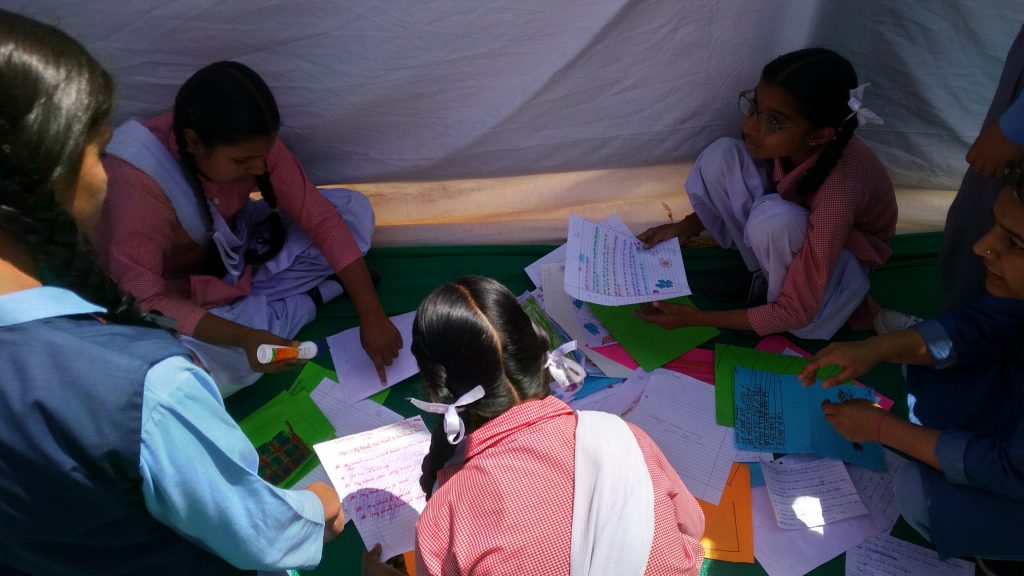
I had the opportunity to conduct one more workshop with even larger number of children the very next day. That day the audience was close to 240 in number. We spoke about games, learnt and tweaked the rules a bit and played more than half a dozen games that don’t require much equipment. Yes, the traditional games of that region like Chhupam Chhupai, Stapu, Pitthu, Gilli-danda, Rassa-kashi, Rumal, Chor-pulees, Gittiyan etc. Weather played spoilsport and it rained around the same time. But we managed to play for quite some time outdoors also. The time flew like a rocket and before we knew it was time for me to send off the children back to their schools. But not before I had said that whenever one felt bored, or felt like taking a break, we should walk up to our friends and play these simple games instead of fiddling with the mobile phones.
And one could also go to www.storyweaver.org.in
Children were slowly becoming familiar with words Pratham Books and StoryWeaver because my intros always began with little notes on these two entities I love.
I must mention that a few people helped me a lot in conducting these two sessions and they included Rama Sharma, Aditi Guleri, Meenakshi, Sheetal, and Rushabh. I also met Pratyush Guleri a well known Hindi poet & author and great Hindi writer Chandradhar Sharma Guleri’s son. The Senior Guleri is known for his masterpiece Usne Kaha Tha a story set in the World War-I.
Rajesh Khar is an Editor at Pratham Books, who enjoys creating, translating and listening to stories.
